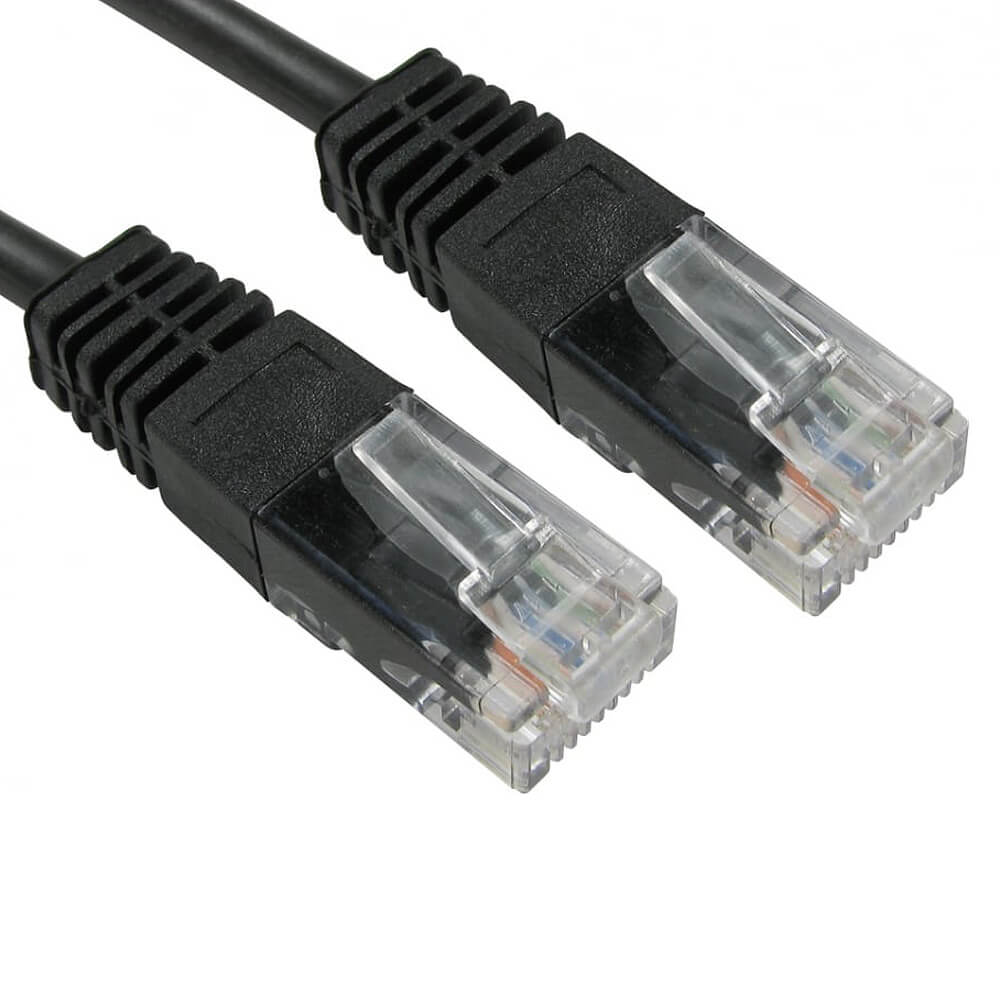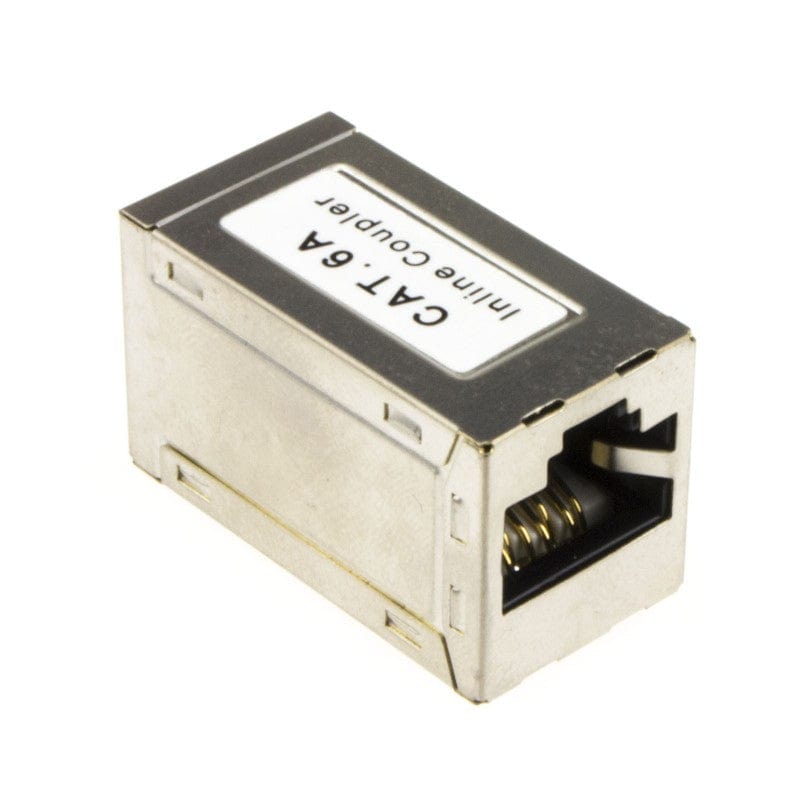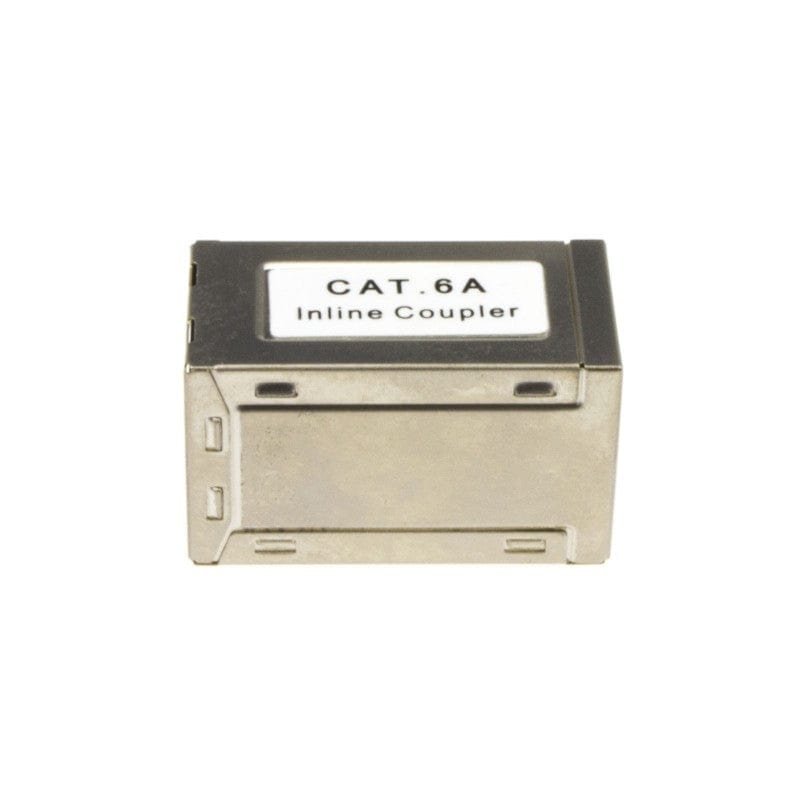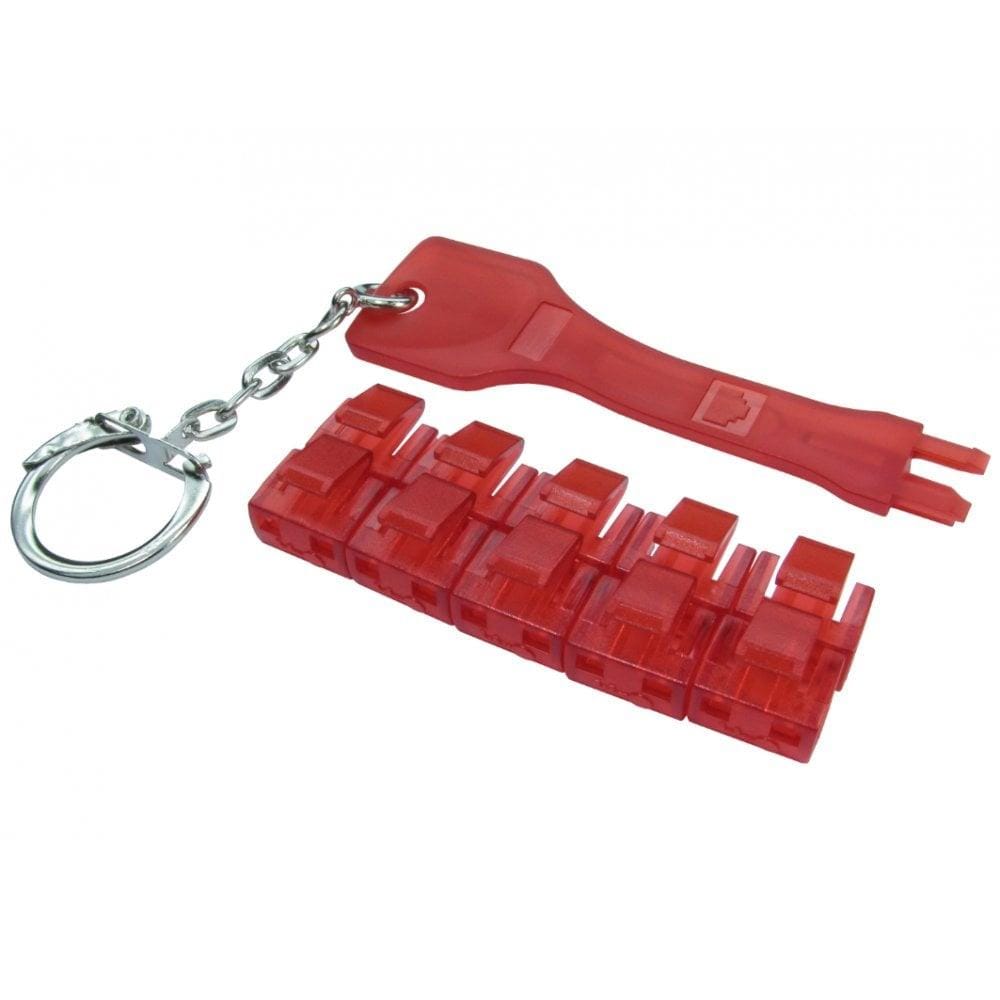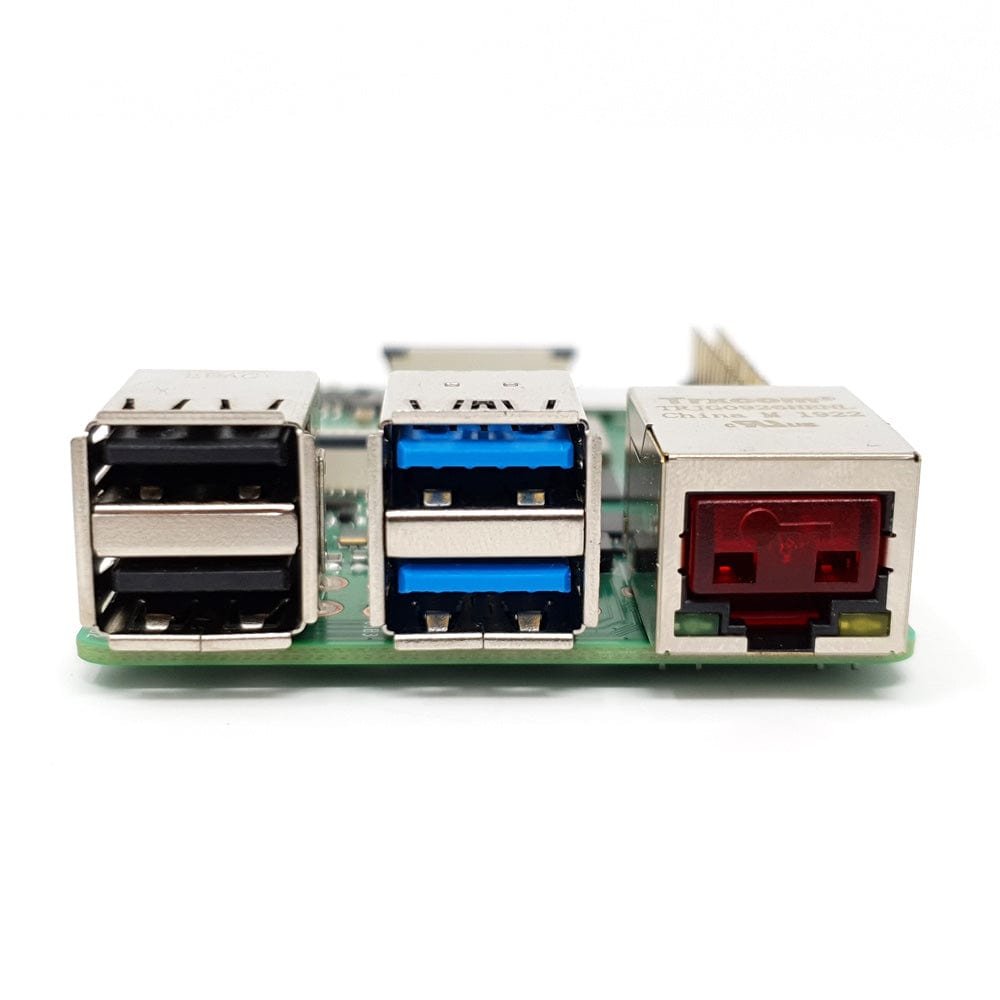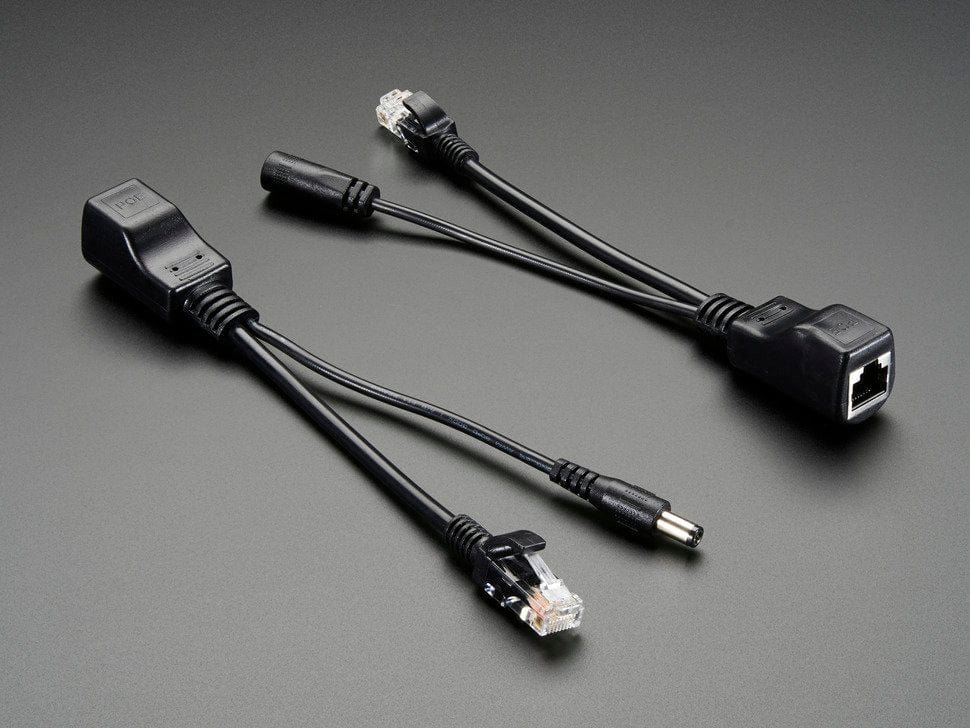
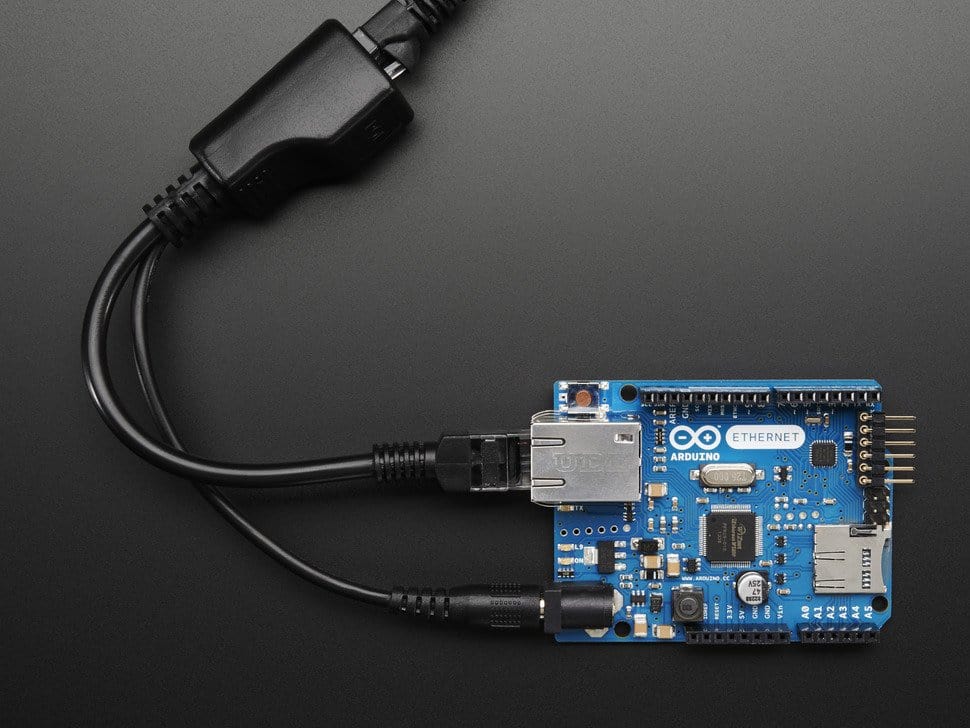
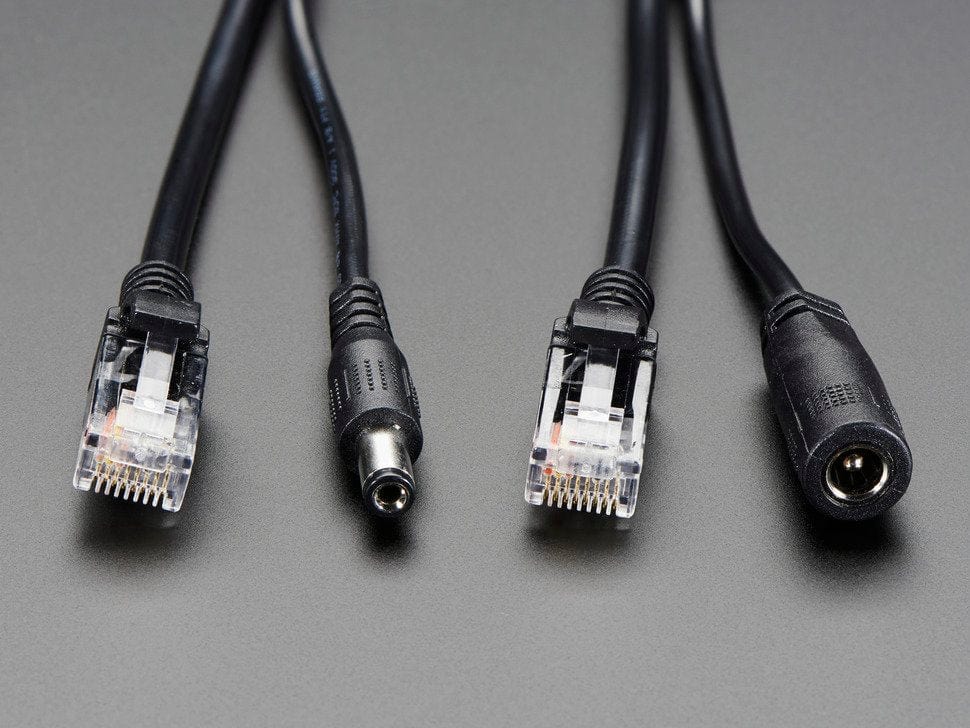
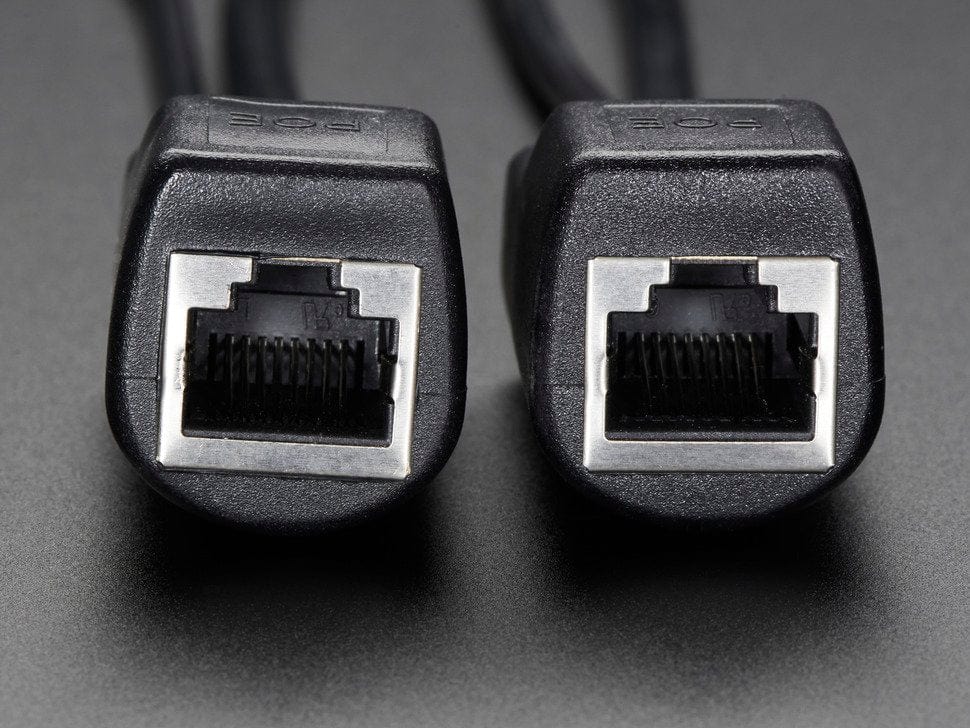
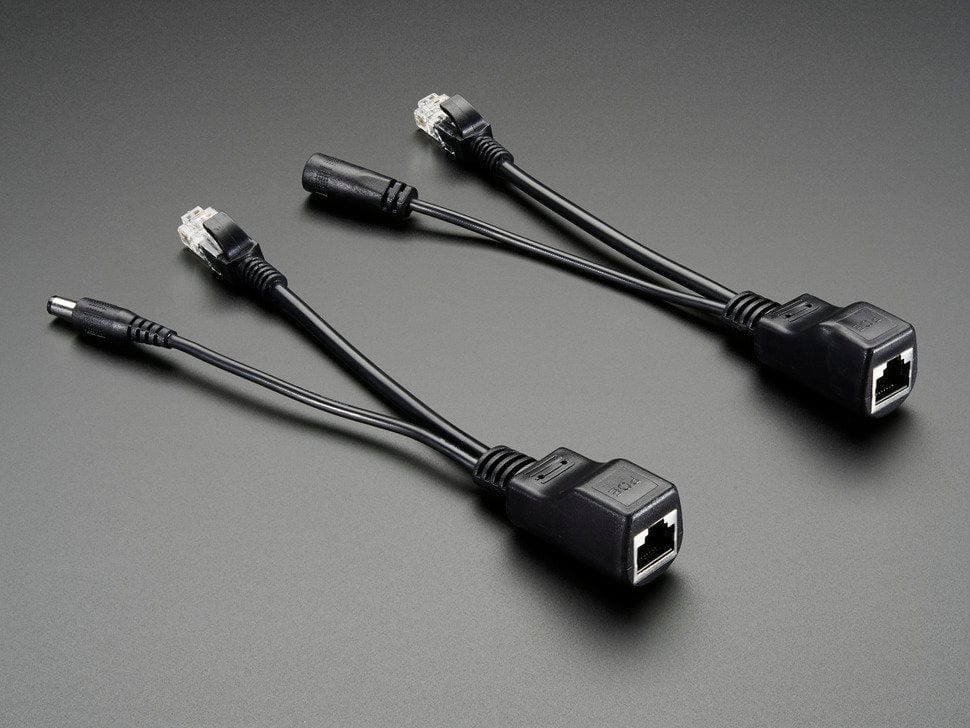
Login / Signup
Cart
Your cart is empty
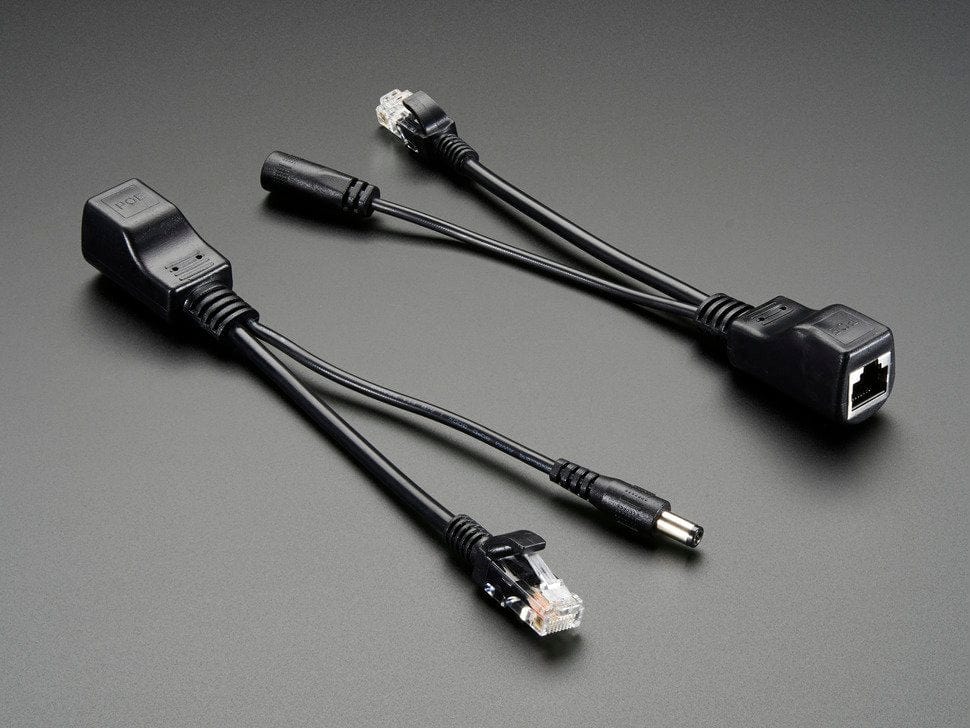
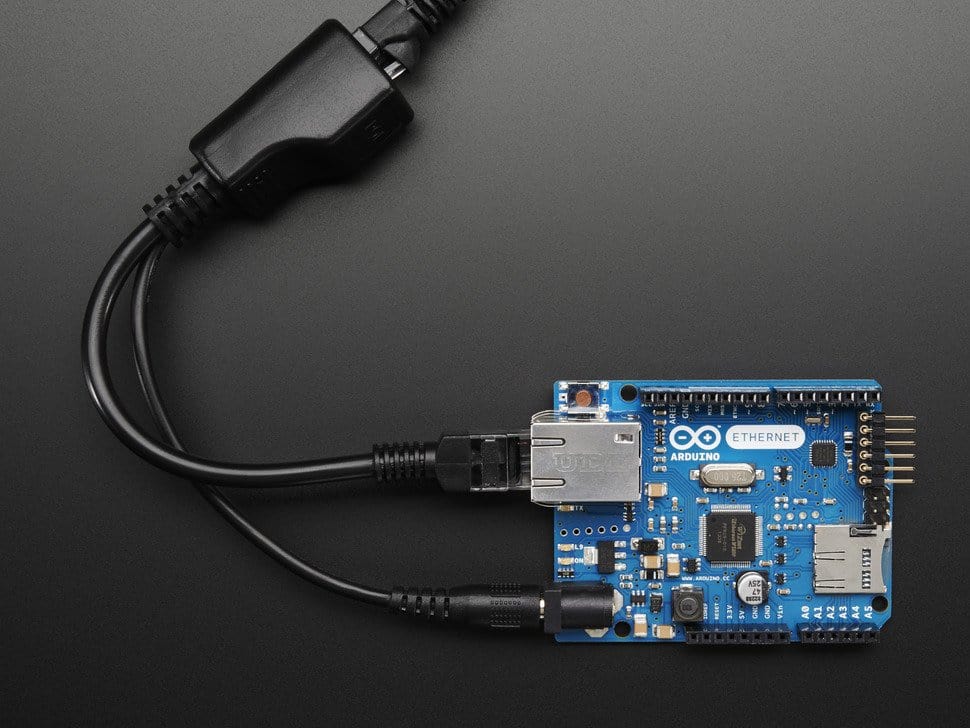
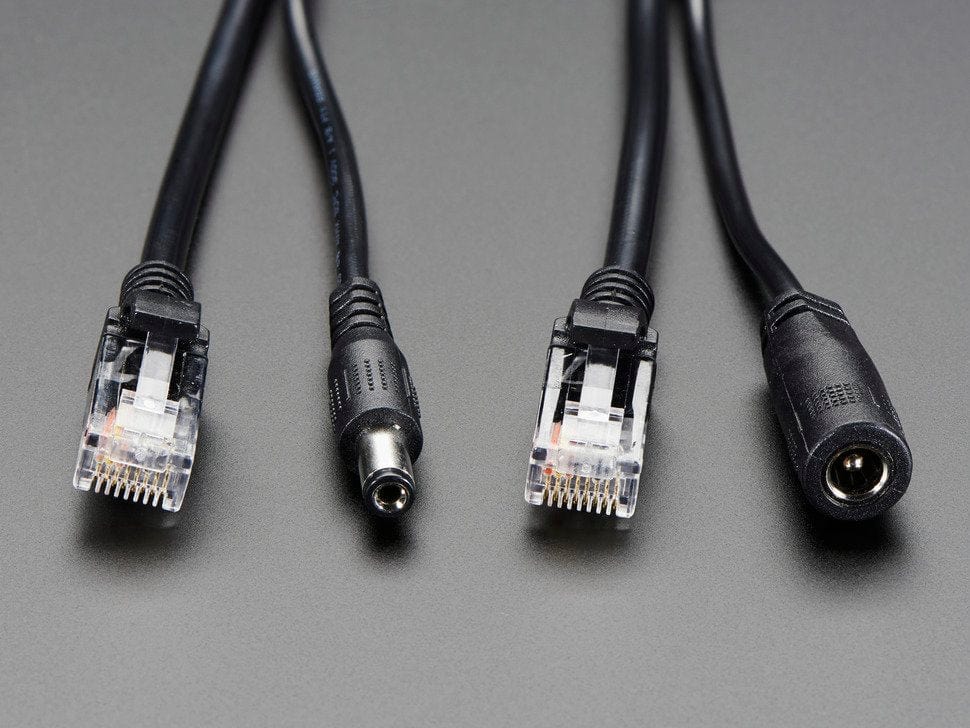
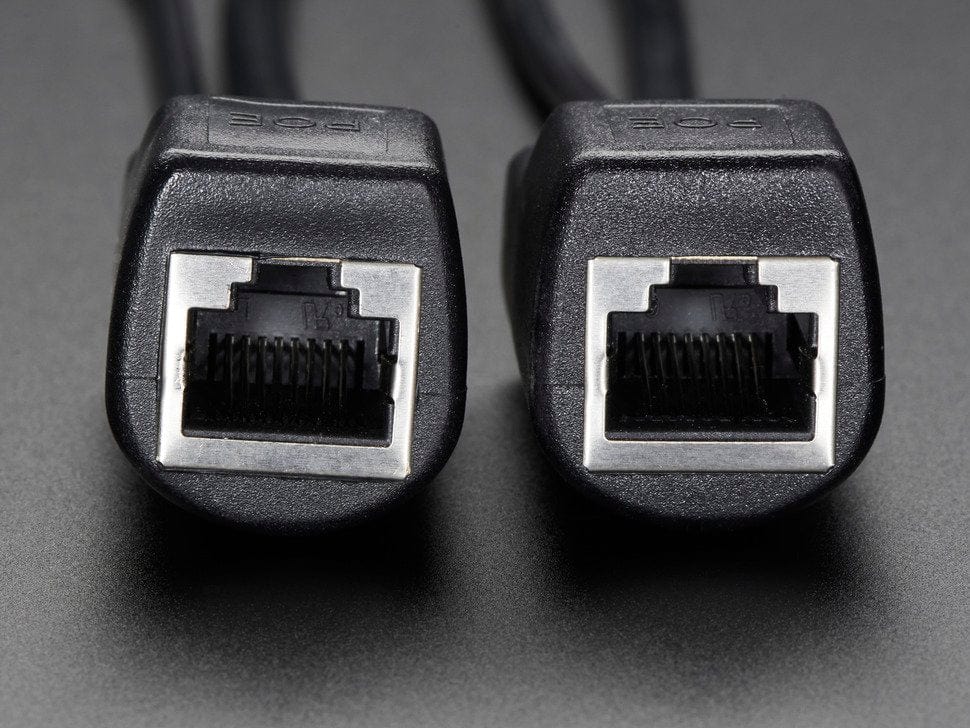
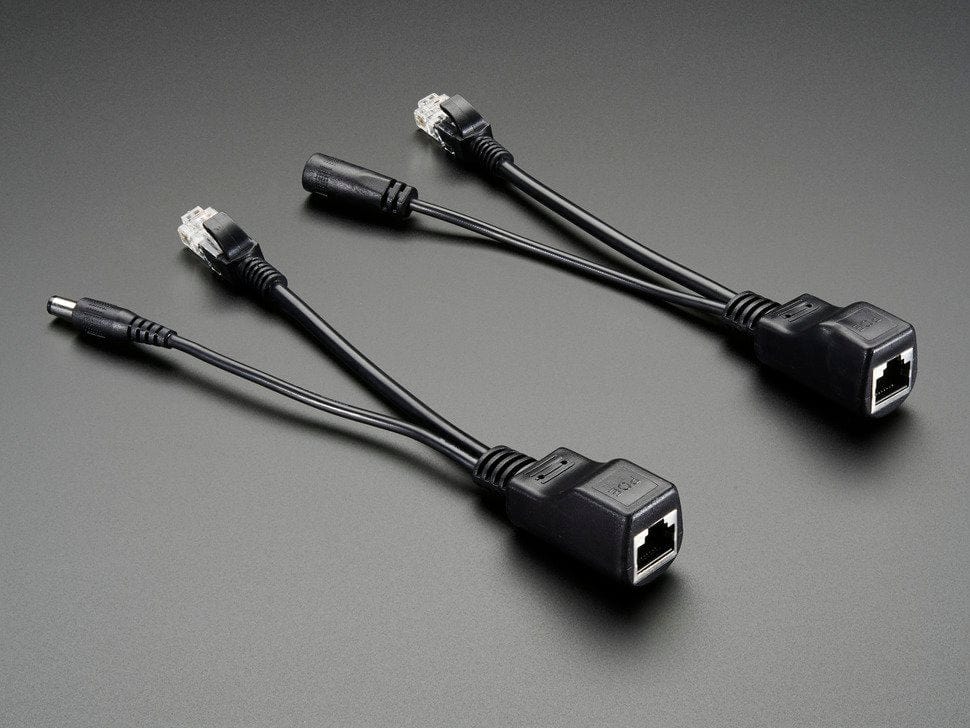
Simplify your Internet of Things with a passive PoE injector cable. These are quite handy for projects that have Ethernet connectivity and also need a power cable. Of course, you can get a long Ethernet cable but then you have to figure out how to plug it in, making a mess of wires. There is an official Power-over-Ethernet standard that allows devices and routers to activate a 48VDC power line on the unused Ethernet pins (4,5 and 7,8) but PoE is expensive, requiring a special router and then a step-down converter to handle the high 48V line
For DIY projects, you may want to consider using these cables instead. One cable (the injector half) has a Ethernet plug and port and a 2.1mm jack. When you plug in a power supply (say a 9VDC wall adapter), the injector merges the power adapter in so that pins 4 and 5 connect to the power adapter power and pins 7 and 8 have the ground signal. This is also known as "Mode B" compatibility The other cable (the extractor half) does the opposite, splitting off pins 4,5 and 7,8 and bringing them to a 2.1mm DC barrel plug. You can then use the DC plug to power your projects as if it was connected directly to the wall adapter.
These are NOT official/standard "Power Over Ethernet" cables and you cannot use these to provide power to an Arduino or other products from an official PoE host device (which will supply 48VDC). They must be used a pair!
Note that Ethernet cables, especially long ones, will act like resistors as you get past 10 meter spans. Most Ethernet cables are 24AWG, 0.085 ohms per meter (0.026 ohms per foot) so if you want to draw say 500mA from your adapter, there will be a 1 Volt drop for every ~25 meters / 80 feet.
Because these cables use pins 4,5,7, and 8 to pass power you can't use these in gigabit Ethernet situations (those pins would be used by the gigabit router), but your device and router should back down to 10/100 megabit in such cases.






